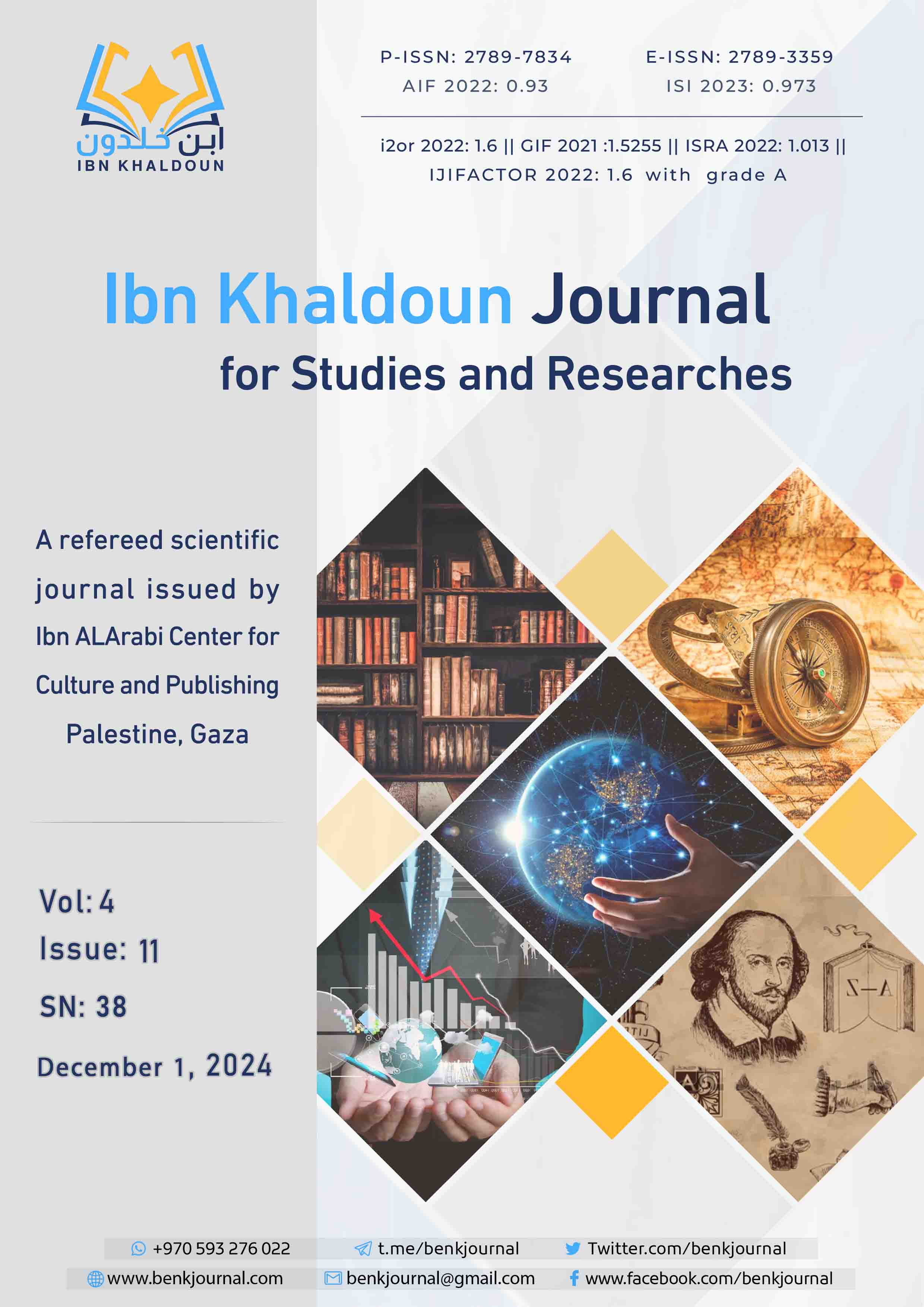The Shadhuniya Maqama according to Ibn Ruzayq: Analytical Study
Main Article Content
Abstract
This study aimed to highlight the significance of the Shadhuniyya Maqama by Ibn Raziq in Omani literature, as it represents one of the artistic forms that reflect Oman’s traditional and intellectual heritage. It sheds light on Ibn Raziq’s contributions as one of the authors of Arabic maqamat, focusing on the creative aspects that distinguish the Shadhuniyya Maqama compared to traditional Arabic maqamat, such as those of Al-Hamadhani and Al-Hariri. Additionally, the study explores the themes addressed in the Shadhuniyya Maqama, such as moral values and social issues. The study methodology adopted a scientific approach that combines artistic and descriptive analysis to uncover the maqama’s artistic and intellectual structure. The historical method was employed to trace the origins and evolution of the maqama genre up to Ibn Raziq, while the descriptive approach analyzed the maqama’s structure, linguistic style, and artistic formulation. The analytical method, which is central to the study, focused on dissecting the maqama’s artistic framework, including its style, language, plot, and characters. The study reached several key findings, including: 1. The Shadhuniyya Maqamais a valuable addition to the field of literary and critical studies. 2. Ibn Raziq’s maqamat reflect the originality of Omani literature and its impact on Arabic literature. Ibn Raziq introduced distinct features to the maqama genre by blending religious and literary ideas. 3. The study highlighted the moral and religious messages that formed the essence of Omani maqamat, such as honesty, courage, and piety. The researcher recommends encouraging students to explore maqamat as a standalone literary genre. It also calls for a deeper academic and research focus on maqamat in general and Omani maqamat in particular by editing and publishing additional texts by Ibn Raziq. This would further enhance the status of Omani literature within the broader context of Arabic and global literature while documenting Omani heritage as a reference for future generations.
Metrics
Article Details

This work is licensed under a Creative Commons Attribution-NonCommercial 4.0 International License.
References
- السعافين، إبراهيم (1987)، أصول المقامات، بيروت: دار المناهل للطباعة والنشر.
- درويش، أحمد وآخرون (2005): تطور الأدب العماني، ط1، مسقط: مكتبة مسقط.
- جبور، عبد النور (1984)، المعجم الأدبي، ط2، لبنان: دار العلم للملايين.
- ابن رزيق (2007): السيرة الجلية، تحقيق: عبد الرحمن بن سليمان السالمي، ط1، مسقط: وزارة التراث والثقافة.
- ابن رزيق (2001): الفتح المبين في سيرة السادة البوسعيدين، تحقيق: عبد المنعم عامر، ومحمد مرسي عبد الله، ط5، مسقط: وزارة التراث القومي والثقافة.
- مبارك، زكي (1934): النثر الفني في القرن الرابع، ط1، مصر: دار الكتب العربية.
- خضير، ضياء؛ والعتوم، كامل (2010): المقامات العمانية من ابن دريد حتى عصرنا الراهن، رسالة التربة، جامعة صحار.
- عاصي، ميشال؛ ويعقوب، إميل (1987): المعجم المفصل في اللغة والأدب، ط1، لبنان: دار العلم للملايين.
ـ إبراهيم، عبد الله (1992): السردية العربية: بحث في البنية السردية للموروث الحكائي العربي، ط1، بيروت: المركز الثقافي العربي.
كيليطو، عبد الفتاح (1993): المقامات: السرد والأنساق الثقافية، ترجمة: عبد الكبير الشرقاوي، ط1، المغرب: دار توبقال للنشر.
البحوث:
ـــ البوعلي، آسية بنت ناصر (2004): البنية الفنية لمقامات ابن رزيق، بحث مقدم لوزارة التراث والثقافة (المنتدى التربوي).
ــ أمبوسعيدي، عبد الله بن مسعود (2003): ابن رزيق ودوره في كتابة التاريخ، رسالة دكتوراه، جامعة الأردن، عمان.





